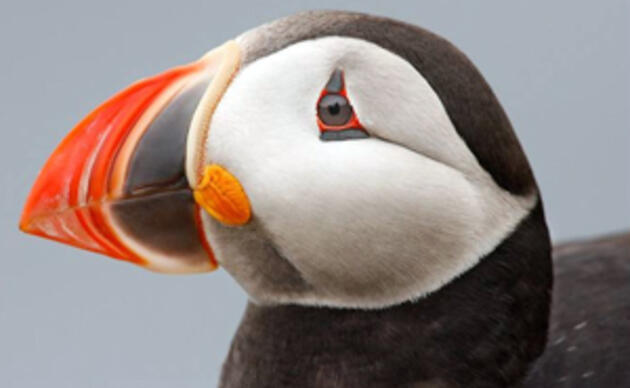Seabird Island News - Vol. 8 - 19 June 2024

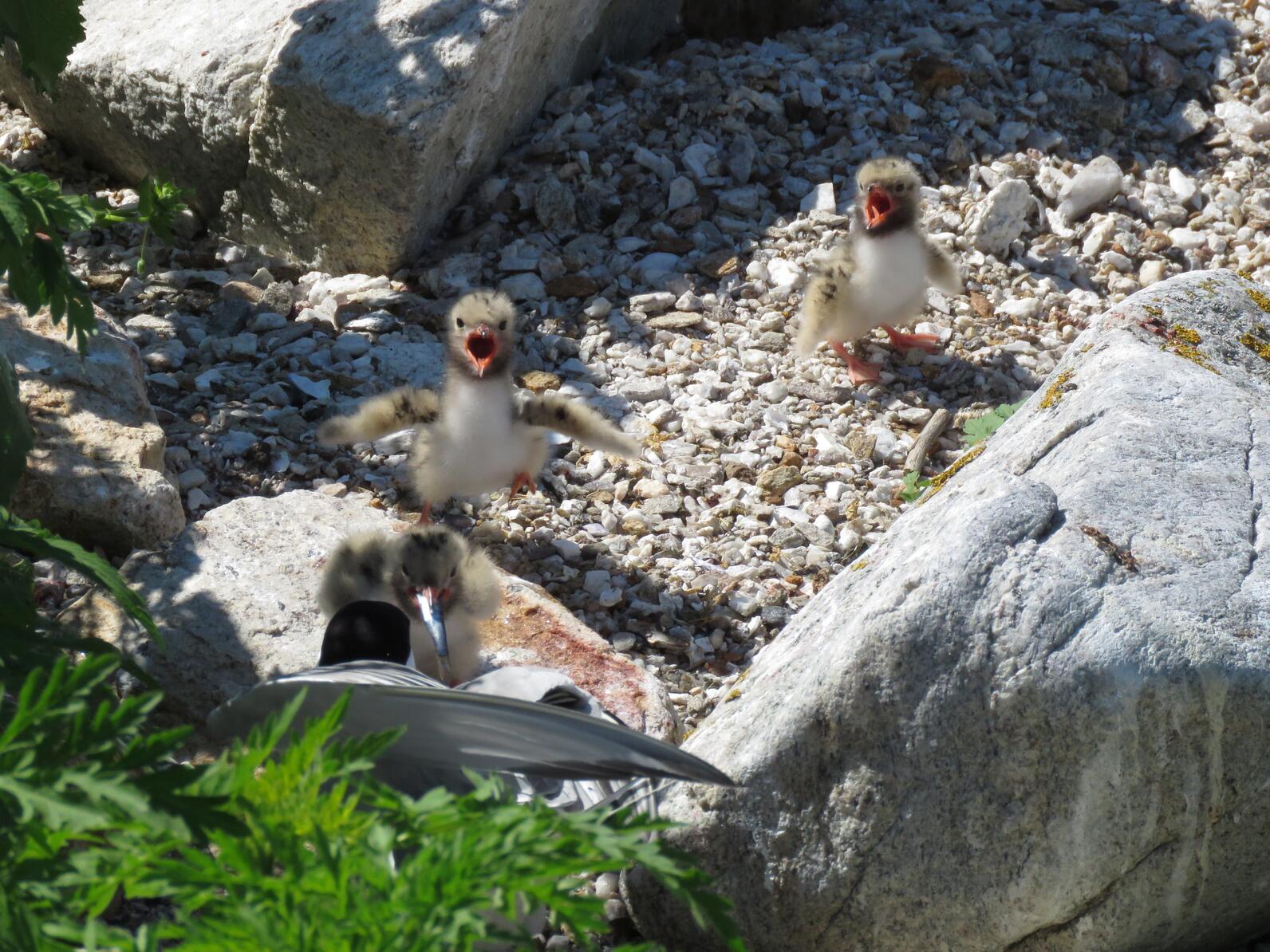
Terns
Peak hatch has descended upon the Gulf of Maine’s seabird nesting colonies, meaning tern parents have escalated their assaults over earlier in the season. Research staff and visitors are being furiously dive bombed by adult terns protecting their chicks. Beyond pesky pecks on the head, guano is flying! Many believe to be pooped on by a bird is good luck – if so, our islanders are being showered with good fortune as they go about their work!
As new chicks receive their honorary, hatch-day leg band ‘jewelry’, older chicks are gaining weight. It’s amazing how quickly these tiny chicks can triple their weight. One Jenny Island chick has exceeded 72 grams and is strong enough to run around the island’s largest study plot. Initial feeding reports indicate that hake, herring, sandlance, and smelt are on the menu. We hope to see more of these optimal forage fish species in seabird diets throughout the summer.
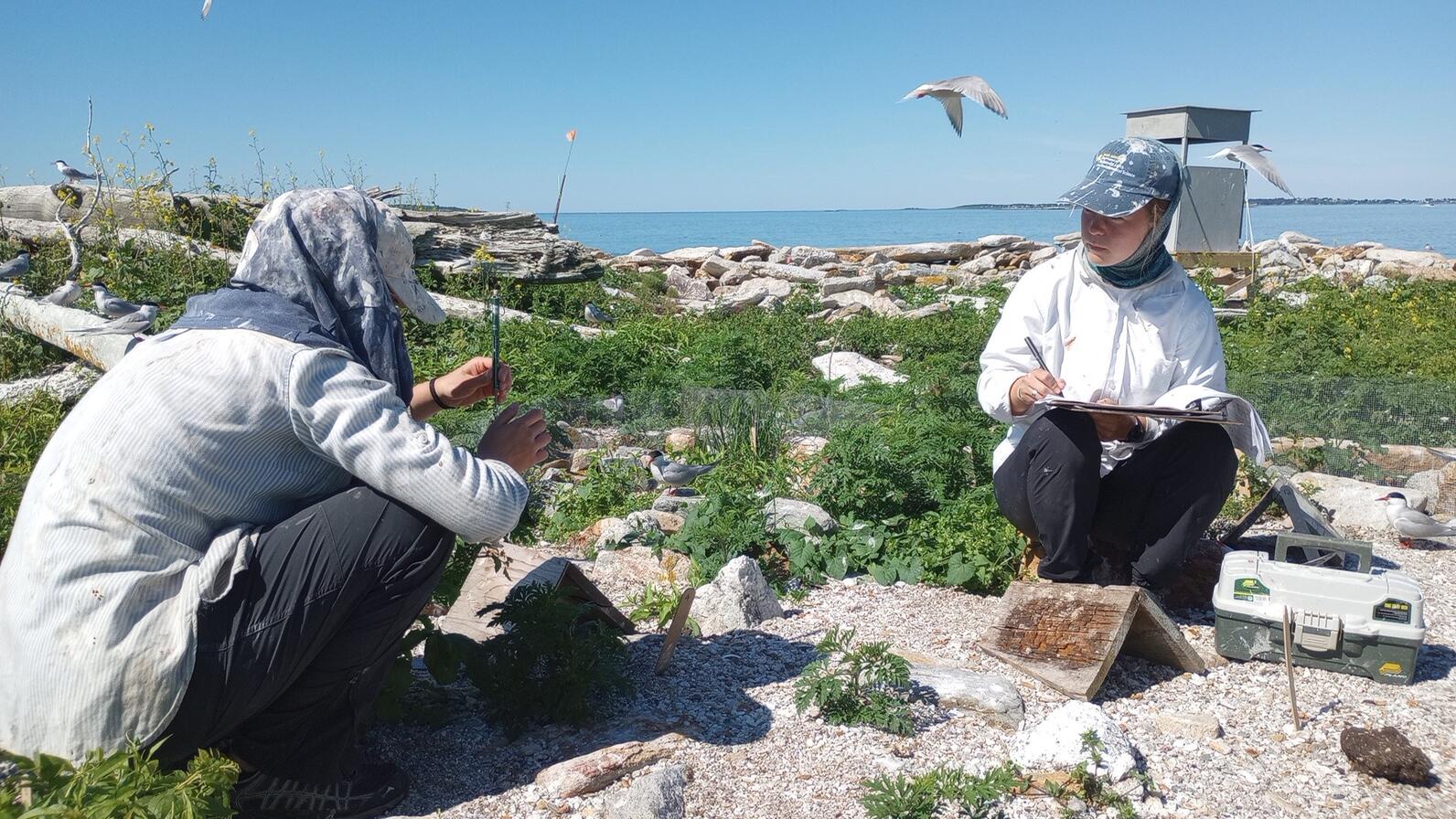
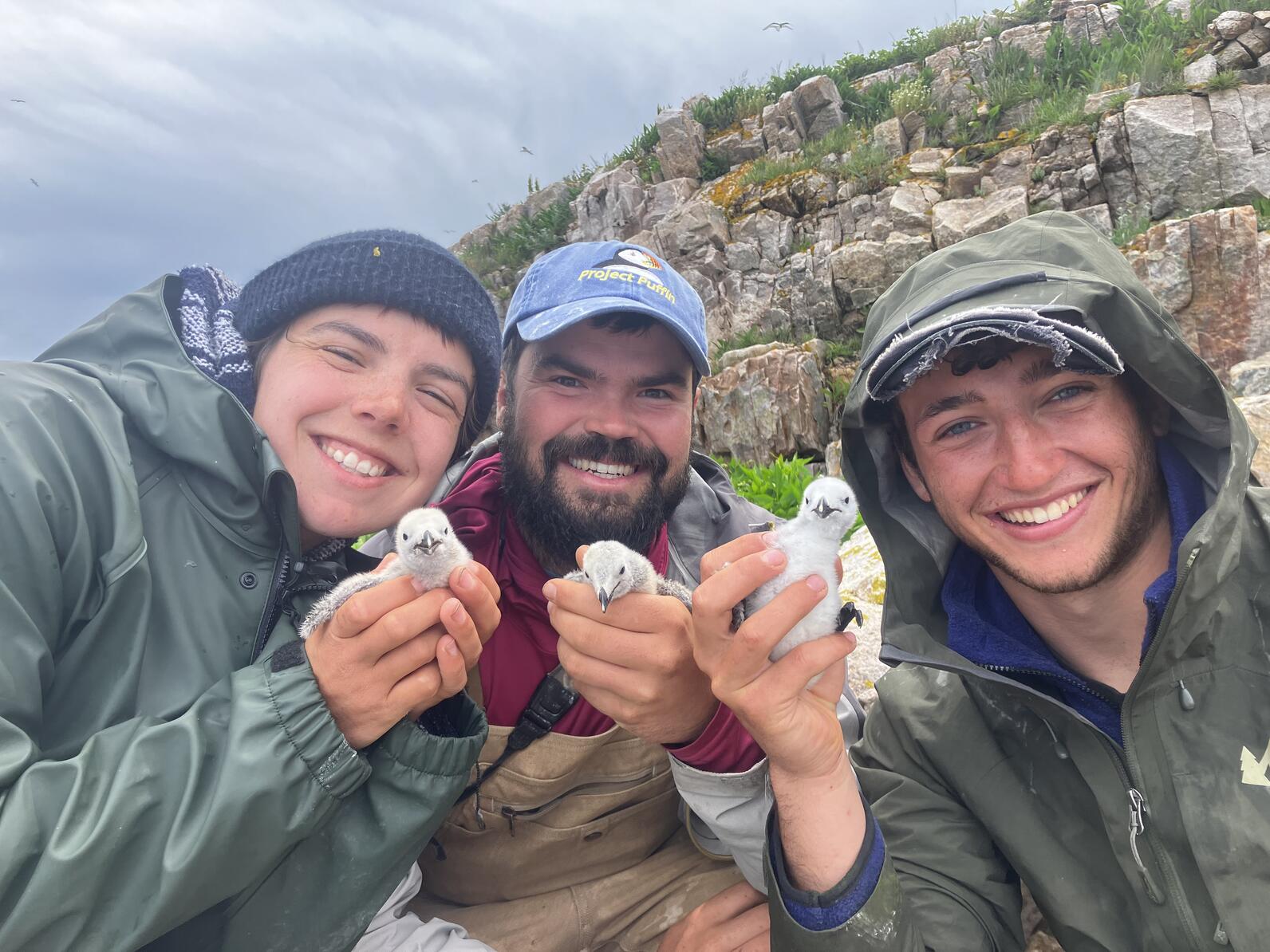
Alcids
Razorbill productivity studies are well underway on Seal Island NWR. The team continues to report lots of squealy “dinosaurs” in burrows. More Black Guillemot eggs are filling out the island’s nesting habitat. Eastern Egg Rock has been increasingly puffin-y. The team on the island has been conducting resighting stints. During foggy periods, they were dazzled by hundreds of puffins flying around in the fog, seemingly appearing and disappearing out of nowhere. These special moments are a unique perk of island life.
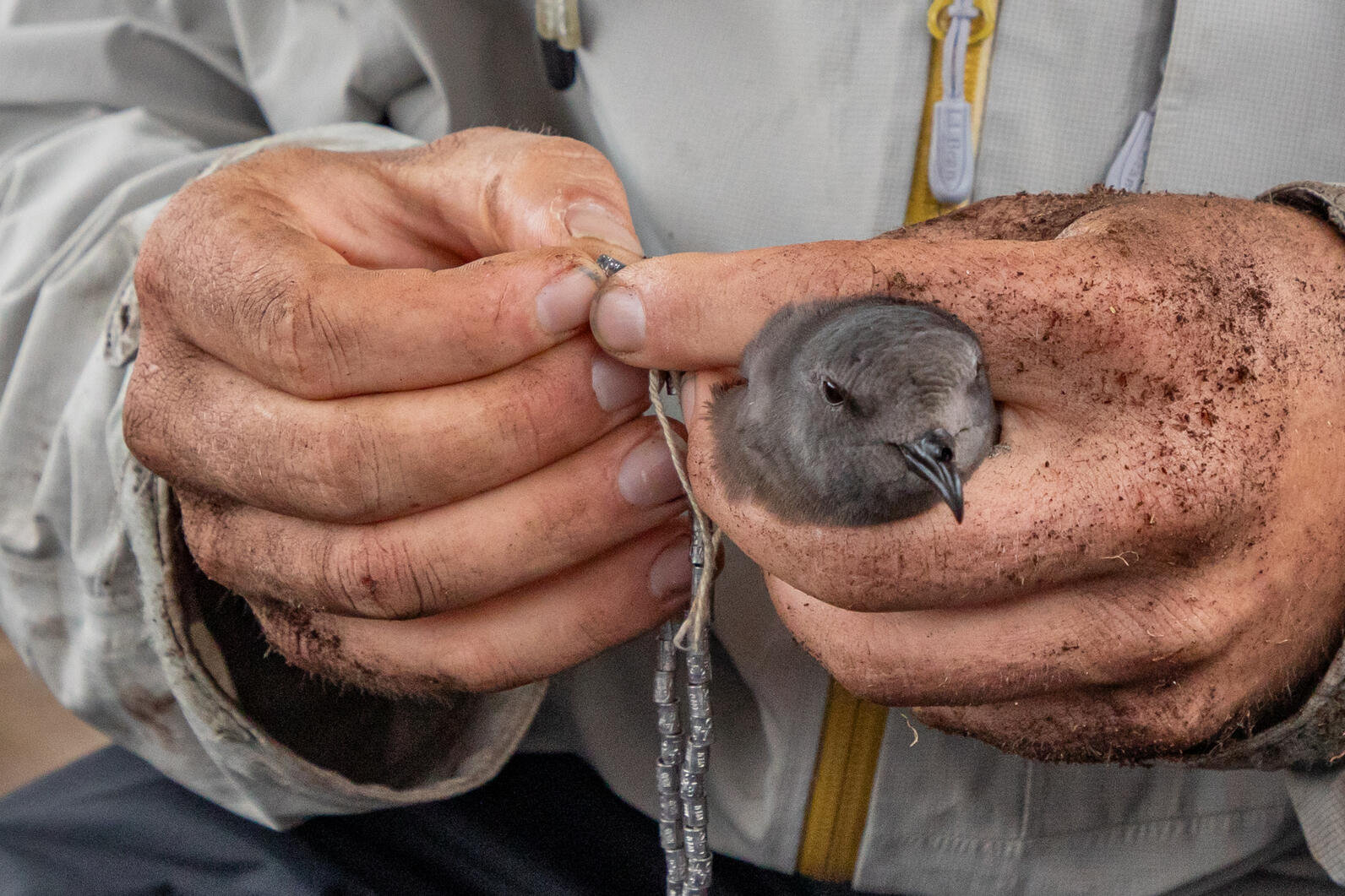
Other Birds
Leach’s Storm-Petrels are small seabirds that nest along northern Atlantic and Pacific coasts. Known for their unique, chattering calls and pleasant, musty smell, Leach’s Storm-Petrels spend daylight hours foraging at sea, only flying around the colony in the dark of night. Reports from nesting colonies along Atlantic Canada indicate that their populations have decreased in recent years, causing them to be of increased conservation concern.
To better understand the general lifespan of Leach’s Storm-Petrels and how their foraging patterns may be impacted by offshore wind development, monitoring of this species has increased on our nesting colonies. Given their elusive behavior, grubbing and mist-netting are the primary methods for monitoring banded birds and banding unbanded birds. Over the course of two recent nights, the team on Seal Island captured 372 birds during mist-netting stints, a record number of captures for June.
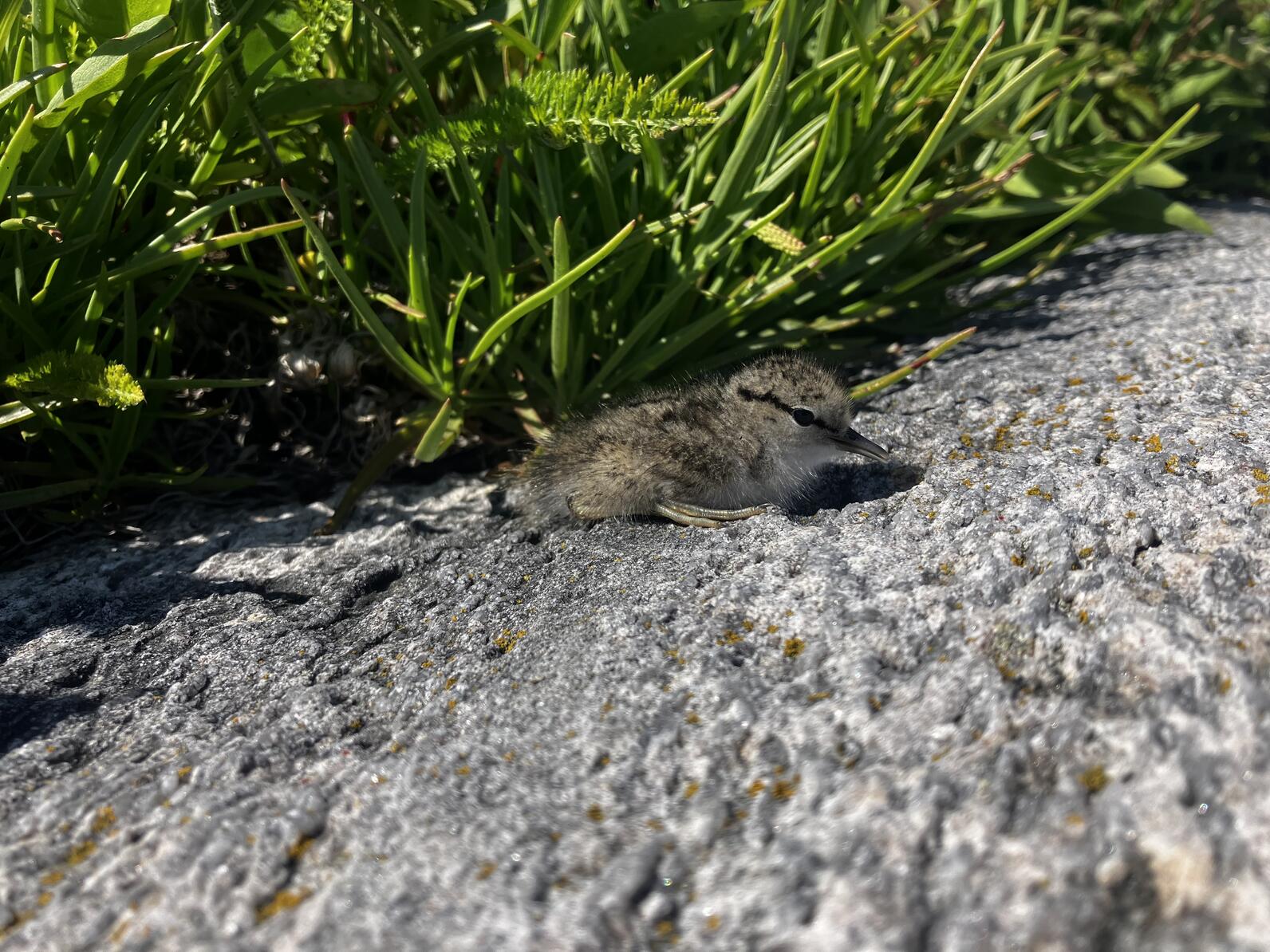
Explore.org
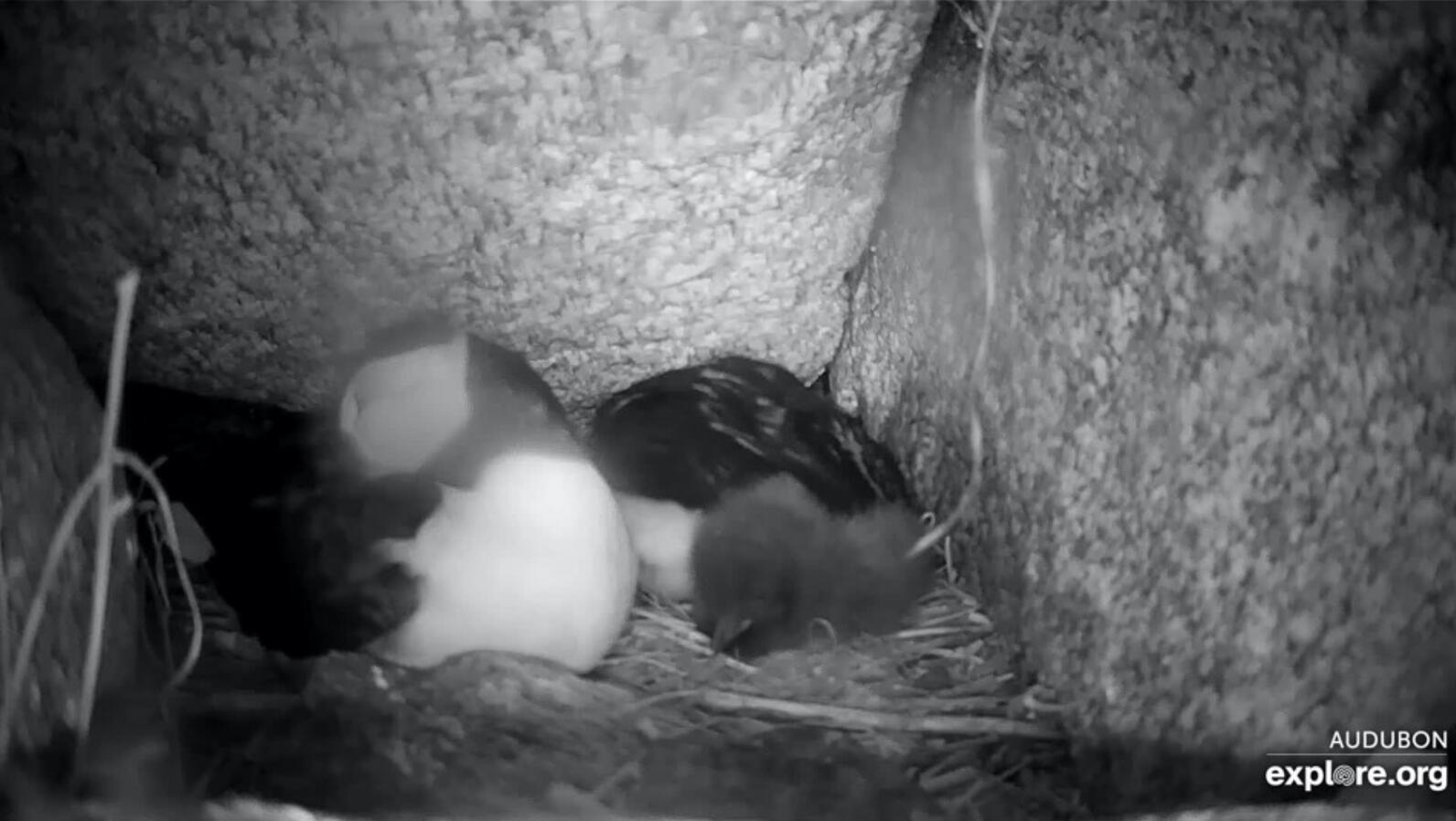
The on-cam puffin chick, Ama, has been growing quickly! The chick happily gobbles down the beakfuls of fish Millie and Willie have been bringing back and has nearly doubled in size. Ama has also gotten more adventurous, flapping its stubby wings and poking around the various crevices in the burrow.
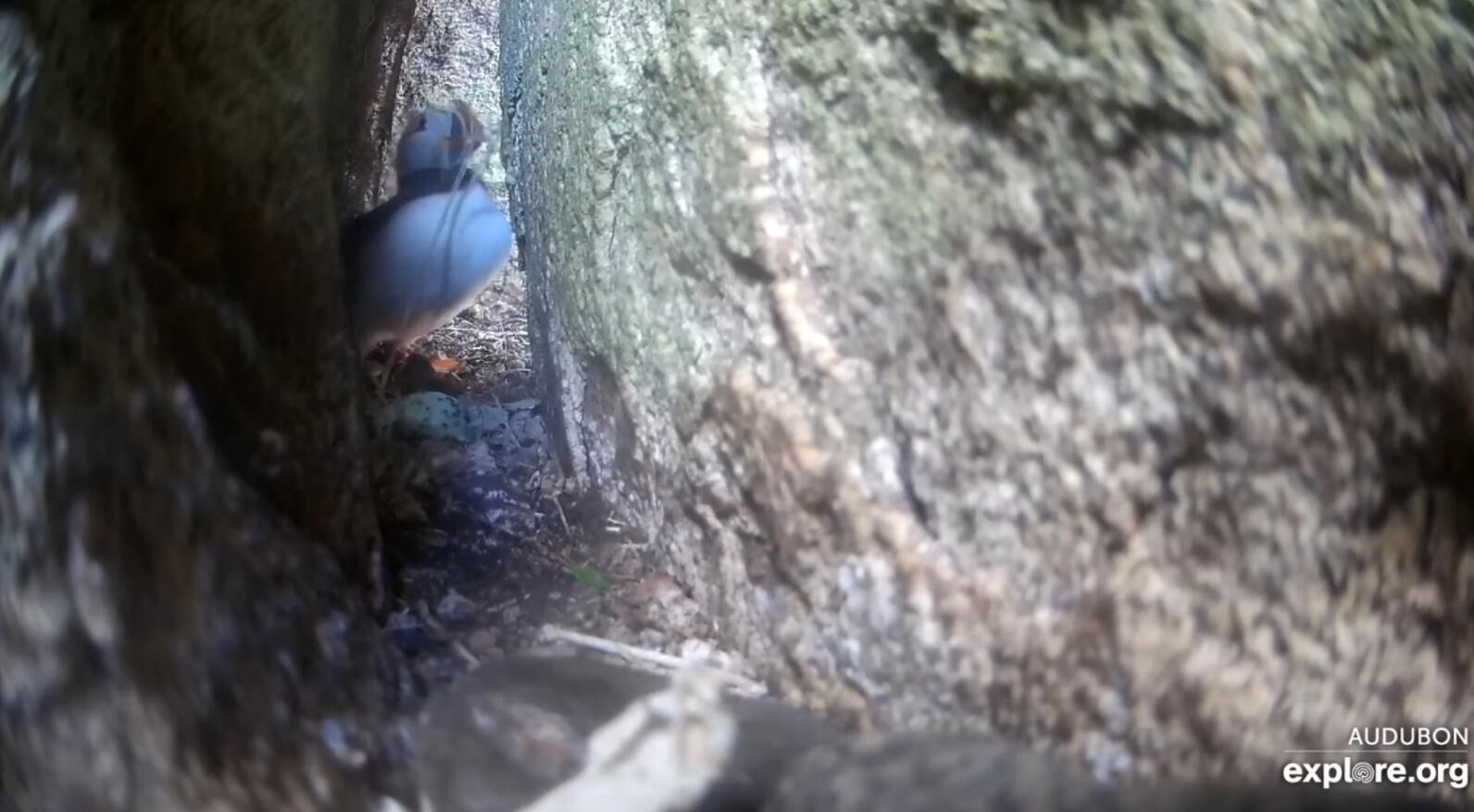
It’s a season of puffintruders! On the Guillemot Burrow cam, viewers spotted a prospecting puffin pair that entered the burrow. One of the puffins seemed particularly pushy – it tried shoving the Guillemot egg out, dug around the dirt, pulled a bit of straw from under the egg, and even came up to the camera. Despite this, the Guillemots have returned to incubate their one egg, which we will be keeping a close eye on!
For additional news, please visit the Seabird Island News index page.
Learn about birds and take action
Adopt-A-Puffin
Adopt now and receive a Certificate of Adoption, along with a biography of "your" puffin!
Visitor Center
The Project Puffin Visitor Center (PPVC) is located at 311 Main Street in downtown Rockland, Maine. The center opened its doors officially on July 1, 2006.


